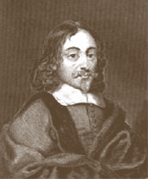Chap. VII.
Of the picture of our Saviour with long haire.
ANOTHER picture there is of our Saviour described with long haire, according to the custome of the Jews, and his description sent by Lentulus unto the Senate;1 wherein indeed the hand of the Painter is not accusable, but the judgement of the common Spectator, conceaving he observed this fashion of his hayre, because he was a Nazarite, and confounding a Nazarite by vow, with those by birth or education.
The Nazarite by vow is declared Numb. 6 and was to refraine three things, drinking of Wine, cutting the hayre, and approaching unto the dead, and such a one was Sampson:2 Now that our Saviour was a Nazarite after this kinde, we have no reason to determine, for he dranke wine, and was therefore called by the Pharisees a Wine bibber;3 he approached also the dead, as when he raised from death Lazarus, and the daughter of Jairus.4
The other Nazarite was a Topicall appellation, and applyable unto such as were borne in Nazareth, a City of Galiliee, and in the Tribe of Napthali; neither if strictly taken, was our Saviour in this sense a Nazarite; for he was borne in Bethlehem in the Tribe of Judah; but might receave that name, because he abode in that City, and was not onely conceaved therein, but there also passed the silent part of his life, after his returne from Ægypt, as is delivred by Matthew, And he came and dwelt in a City called Nazareth, that it might be fulfilled which was spoken by the Prophet, he shall be called a Nazarene;5 both which kinds of Nazarites, as they are distinguishable by Zaid, and Tsade in the Hebrew, so in the Greeke, by Alpha and Omega; for, as Jansenius6 observeth, where the votary Nazarite is mentioned, it is written NazaraioV, as Levit. 6. and Lament. 4. Where it is spoken of our Saviour, we reade it NazwraioV, as in Matthew, Luke, and John; onely Marke who writ his Gospell at Rome did Latinize and write it NazarhnoV.
NOTES
* [My or others' notes are in square brackets]; Browne's marginalia is unmarked; {passages or notes from unpublished material by Browne is in curly braces}. Ross, Arcana Microcosmi II:11, argues that (1) long hair was customary, (2) it was ornamental, and (3) a "contemporary" portrait of Jesus (known in Ross's day to be a forgery) shows him with long hair.
1 [A medieval forgery, exposed long before Browne's day. We might add to the list of long-haired representations of Jesus the Shroud of Turin; and in that spirit, we append a note from Wilkin:
Perhaps the most celebrated of the reputed original portraits of the Redeemer is that said to have been received by Abgarus, King of Edessa, mentioned by Evagrius. Eusebius gives a letter sent by the said Abgar to Jesus Christ, professing the conviction which the Redeemer's miracles had wrought in his mind of the divine character of our Lord, and entreating him to come to Edessa and cure a disease under which the king had long laboured; —together with our Lord's answer, declining to come, but promising to send a disciple to heal the king. For these letters see Hone's Apocryphal New Testament. In his Everyday Book, Jan. 13th, he gives a woodcut of the portrait. In the London Literary Gazette of Nov. 29, 1834 is a much better account of the circumstance, in a review of Baron Hubboff's History of Armenia, published by the Oriental Translation Society. I subjoin his account of the picture. "Abgar sent a painter to take the likeness of the Saviour, if he would not vouchsafe to visit Edessa. The painter made many vain attempts to draw a correct likeness of our Saviour. But Jesus, being willing to satisfy the desire of King Abgar, took a clean handkerchief and applied it to his countenance. In that same hour, by a miraculous power, his features and likeness were represented on the handkerchief." The picture thus miraculously produced is said to have been means of delivering the city from the siege laid to it by Chosroes, the Persian, 500 years afterwards. Thaddeus went to Edessa after Christ's ascension and healed Abgar.]
2 [Judges 13: 3 And the angel of the Lord appeared unto the woman, and said unto her, Behold now, thou art barren, and bearest not: but thou shalt conceive, and bear a son.
4 Now therefore beware, I pray thee, and drink not wine nor strong drink, and eat not any unclean thing:
5 For, lo, thou shalt conceive, and bear a son; and no razor shall come on his head: for the child shall be a Nazarite unto God from the womb: and he shall begin to deliver Israel out of the hand of the Philistines.
6 Then the woman came and told her husband, saying, A man of God came unto me, and his countenance was like the countenance of an angel of God, very terrible: but I asked him not whence he was, neither told he me his name:
7 But he said unto me, Behold, thou shalt conceive, and bear a son; and now drink no wine nor strong drink, neither eat any unclean thing: for the child shall be a Nazarite to God from the womb to the day of his death.]
3 [Matthew 11:19 and Luke 7:34; he is also called a friend unto tax collectors and sinners.]
4 [Lazarus, John 11; Jairus, Mark 5:22 and Luke 8:41; she is "at the point of dying", not dead.]
5 [Mark 2:23, referring to Isaiah 11.]
6 Ians.. Concordia Evangelica.
28 Luke 7.
This page is dedicated to the memory of Boo the Cat.
